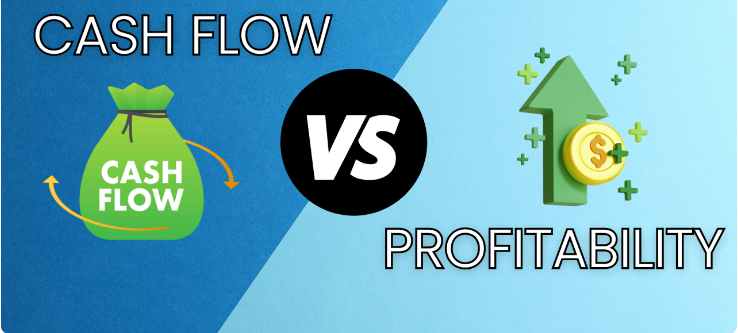Cash Flow vs. Profit: Why Understanding the Difference Is Key
Many entrepreneurs (and even some seasoned business owners) make the mistake of using cash flow and payoff interchangeably. While they’re connected, they measure two very different aspects of financial health and confusing them can lead to big problems, from surprise bills to business failure.
Let’s break down the difference, why it matters, and how to manage both effectively.
What Is Profit?
Payoff is what’s left over after you subtract all expenses from your revenue.
There are three main types:
-
Gross payoff– Revenue minus the cost of goods sold (COGS)
-
Operating payoff– Gross payoff minus operating expenses
-
Net payoff– The “bottom line” after all expenses, including taxes and interest
Think of profit as your “score” in the game of business. It shows if you’re earning more than you’re spending.
What Is Cash Flow?
Cash flow measures the movement of money in and out of your business during a specific period.
Types of cash flow:
-
Operating cash flow – Money from day-to-day operations
-
Investing cash flow– Money from buying or selling assets
-
Financing cash flow– Money from loans, investors, or dividends
💡 Think of cash flow as your “fuel.” Without enough fuel, even a profitable business can stall.
The Key Difference
You can be profitable on paper but still run out of cash if customers pay late, inventory sits unsold, or expenses pile up before payments arrive.
Likewise, you can have positive cash flow in the short term (say, from a loan) but be unprofitable if your costs exceed your revenue.
Why This Matters
Failing to distinguish between the two can lead to:
-
Missing payroll despite “making a payoff”
-
Taking on unnecessary debt
-
Poor decision-making about investments or growth
-
Difficulty securing funding (investors check both metrics)
How to Manage Both
1. Track Them Separately
Use accounting software like QuickBooks, Xero, or FreshBooks to generate both profit & loss statements and cash flow statements.
2. Speed Up Receivables
Send invoices quickly, offer early payment discounts, and follow up on late payments to improve cash flow.
3. Control Expenses
Cut unnecessary costs to boost both profit and cash reserves.
4. Keep a Cash Buffer
Aim for at least 3–6 months of operating expenses in reserve to cover slow months.
5. Forecast Regularly
Review cash flow forecasts alongside profit projections to anticipate problems before they hit.
Bottom Line
Payoff shows whether your business model works.
Cash flow shows whether your business can survive day-to-day.
You need both in harmony to grow, pay your bills, and stay in business long-term.


